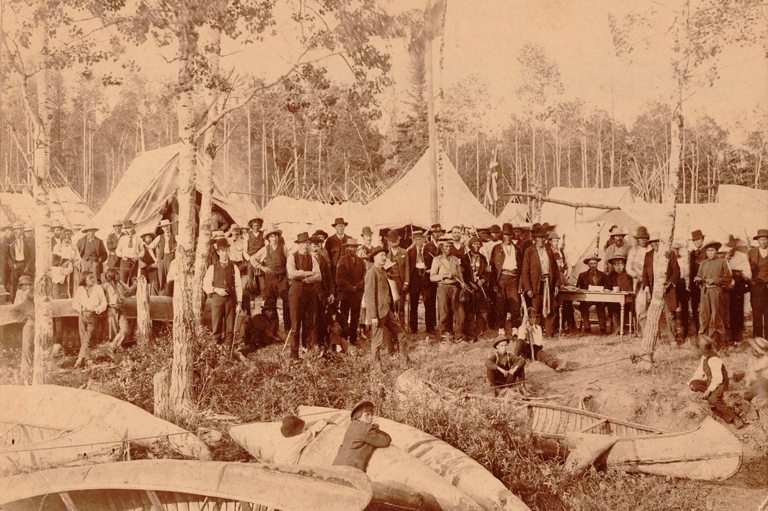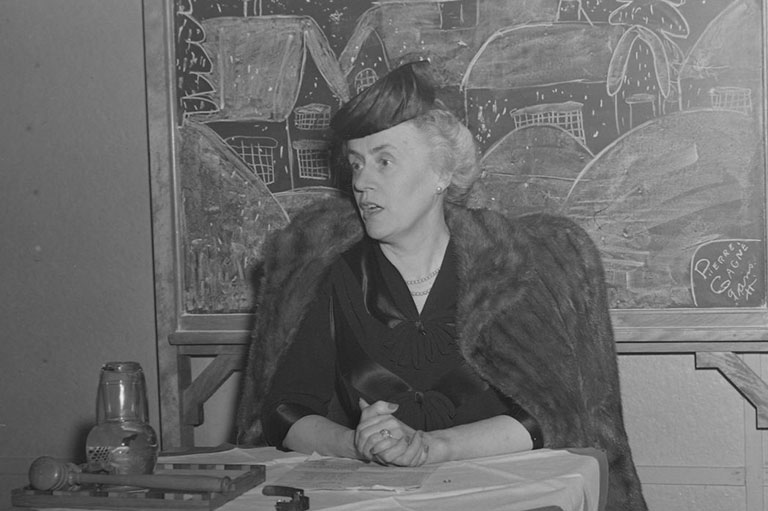Discover a wealth of interesting, entertaining and informative stories in each issue, delivered to you six times per year.
Expo 67 - Katimavik Revisited 2017
This lesson plan is inspired by the article “Mission Impossible” in the June-July 2017 issue of Canada's History magazine.
Grade Levels: Grades 9/10
Subject Area: Social Studies, History
Lesson Overview
Note: This is one of three examples in the Expo ‘67 Unit Plan. If required, please see the Unit Plan overview.
Teachers may utilize this lesson:
- in the midst of the Unit on Expo 67, for student research and skill-development associated with the Historical thinking Concept Cause and Consequence.
This lesson challenges students:
- to identify and prioritize background (or upfront) causes for the creation of Expo 67
- to conduct inquiry into identifiable “deeper” causes from a variety of contexts
- to demonstrate their causes in a visual organizer
- to synthesize generalizations that suggest 'consequences' of Expo 67
- use the Iceberg graphic organizer, students can be grouped to conduct this activity, or each may perform the task individually. The Iceberg Organizer can be student-generated or this template can be used.
- to promote student voice
- to scaffold their learning within their peer groupings
Time Required
150 minutes
Historical Thinking Concept(s)
This lesson plan uses the following historical thinking concepts: establish historical significance, use primary source evidence, analyze cause and consequence, and take historical perspectives.
Learning Outcomes
Students will be able to:
- Select key dates, facts, events that define significance of Expo 67 (Remembering)
- Locate answers to questions associated with the who,what, when, where, why of Expo 67 (Remembering)
- Find relevant primary /secondary data associated with Expo 67 (Remembering)
- Inquire deeply into the Expo 67 experience by designing inferential questions
- Summarize the Expo 67 experience from multiple perspectives (Understanding)
- Discover data that informs their assumptions and leads them to newer/deeper understandings (Analyzing)
- Identify social, political, economic, cultural motives/causes for Expo 67 and analyze changes since 1967 (Analyzing)
- Prioritize/rate/rank events in twentieth century that contributed to ideals espoused by Expo 67
- Explain the importance of Expo 67 in defining a new vision for Canada into twenty-first century (Evaluating)
- Create informed judgments on the role/place/significance of Expo 67 in twenty-first century Canadian history (Synthesize)
Learning Goals and Strategies:
- Group students according to the themes identified for this Summative Task on Expo 2017 (Canadian Identity / Technology / Gender / International Relations, etc.).
- Teachers must utilize a Research Organizer (see the Expo Research Template as an example) to facilitate student understanding of the Causal factors for Expo 67.
- Students can identify and prioritize these factors from data available in “Mission Impossible” from the June-July 2017 issue of Canada's History magazine, as well as any other external sources in Materials/Resources of the Unit Plan.
- Individually, students should be encouraged to complete the Iceberg Organizer for their theme. Some students might struggle to find certain causes for certain themes. Teachers should be aware of this in advance and do their best to supply supporting data for those groups.
- Thematic groups can then come together to propose/debate/prioritize/delete causes, as identified by group members, and determine those causes that are at the “Tip of the Iceberg” and those that are 'below the surface'/deeper causal factors.
- Their findings should be visually displayed for the class either on the wall or digitally.
- Each group should also be tasked with summarizing/generalizing the Consequences of Expo ‘67, given the causal factors they have identified/prioritized. Potential syntheses can be suggested based on positions taken in “Mission Impossible” &/or other sources.
- These consequences should be compared/contrasted with the position that each student took earlier in the unit, as their learning was being activated. Teachers should encourage their students to revise or alter their original positions if necessary.
Materials/Resources
- Unit Plan Overview
- “Mission Impossible” from the June-July 2017 issue of Canada's History magazine
- Expo Research Template
- Document Analysis Form
- Iceberg Diagram. For a deeper explanation & rationale for the Iceberg Strategy visit facinghistory.org.





